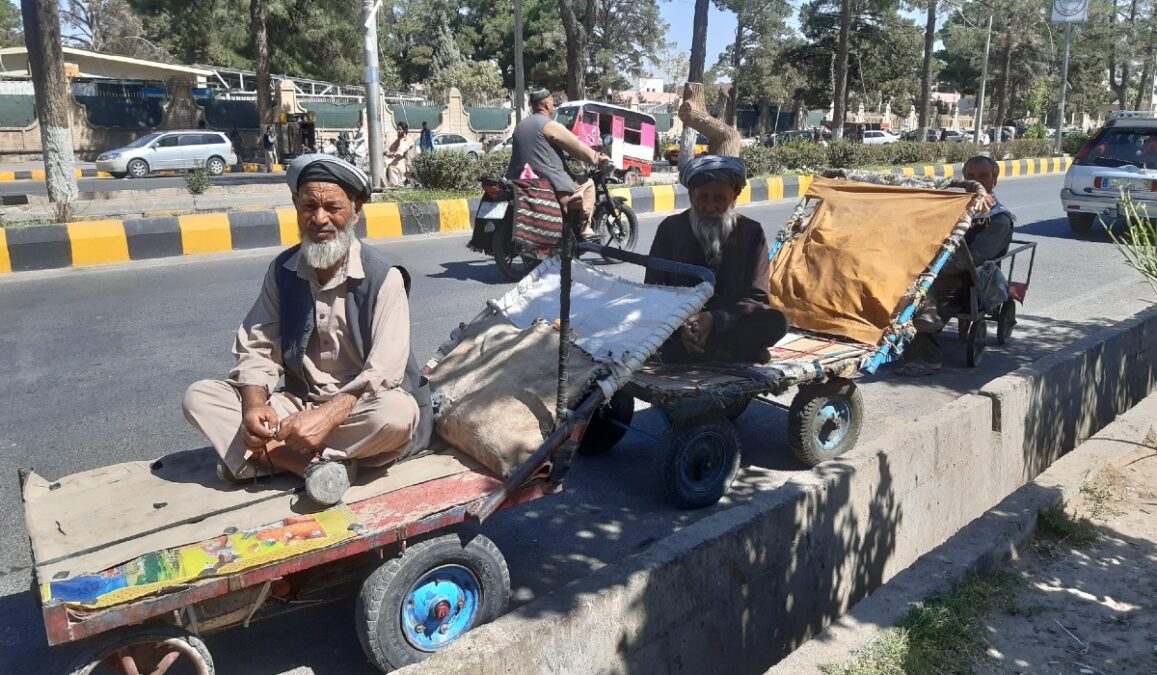A new study of Afghanistan’s economy demonstrates that without continuity for girls’ education and women’s ability to work, prospects for the country’s recovery will remain grim.
The study, “Afghanistan Socio-Economic Outlook 2023”, released on Tuesday in Kabul by the United Nations Development Programme (UNDP), details how Afghanistan’s economic output collapsed by 20.7 percent following the Taliban takeover in 2021. This unparalleled shock has kept Afghanistan among the poorest countries in the world.
And despite tentative signs of recovery, such as a relatively stable exchange rate, an increase in exports, growing demand for labor, and muted inflation, GDP is estimated to have further declined by 3.6 percent in 2022.
“A sustained inflow of foreign aid, to the tune of $3.7 billion in 2022, has helped avert the total collapse of Afghanistan,” said UNDP Resident Representative in Afghanistan Abdallah Al Dardari.
The United Nations (UN) contributed $3.2 billion of the overall $3.7 billion in foreign aid to Afghanistan in 2022. UN assistance reached directly 26.1 million Afghans with some form of aid, while helping to stabilize the exchange rate, curb inflation and affect other economic indicators.
The new report projects that the 2023 GDP in Afghanistan could increase by 1.3 percent if the level of foreign aid remains at $3.7 billion. However, prospects for economic recovery remain weak and insufficient over the long term, especially if foreign aid is withheld as a result of restrictive Taliban policies.
“There will be no sustainable recovery without the active participation of Afghan women in the economy and in public life, which includes delivering on humanitarian and livelihoods-saving projects,” said UNDP Regional Director for Asia and the Pacific, Kanni Wignaraja. “Only the full continuity of girls’ education and women’s ability to pursue work and learning can keep the hope of any real progress alive.”
The edicts restricting the rights of women and girls, including a directive banning Afghan women from working for the UN, directly affect economic productivity and may also impact the level of aid inflows. There are also considerable headwinds arising from adverse geopolitical factors and economic difficulties in the neighboring countries, which could spill over to Afghanistan.
The new UNDP paper analyzes the potential impact of a hypothetical aid cut on Afghanistan’s economy. Using an indicative value of a 30 percent reduction in aid from $3.7 billion to $2.6 billion, UNDP projects that Afghanistan’s GDP would further contract by 0.4 percent, a decline that would send the country hurtling to the bottom of the global poverty scale.
The study notes that impoverished Afghans are already taking extreme measures to survive. “Some have been compelled to sell their homes, land, or assets that generate income; others have resorted to the distressing practice of commodifying their own family members, turning children into laborers and young daughters into brides,” the report states.
“Afghanistan is on the brink of economic collapse, exacerbated with the takeover in August 2021. The effects of the pandemic, followed by an extraordinary 20.7 percent contraction of the economy, and an unusually severe drought, have resulted in the loss of food, livelihoods and access to basic services,” said UNDP Administrator Achim Steiner in a statement. “Only the continued provision of international aid and basic services to millions of Afghans have prevented a full collapse.”
The research finds that the number of people living in poverty skyrocketed from 19 million in 2020 to 34 million in 2022. “If foreign aid is reduced this year, Afghanistan may fall from the cliff edge into the abyss,” Al Dardari cautioned.





